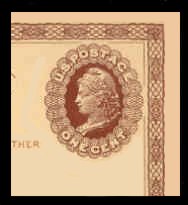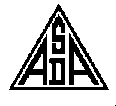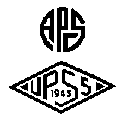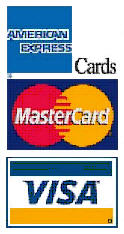
Steve Levine
P.O. Box 951
Linden Hill Station
Flushing, NY
11354
Phone: 718-939-5788



 |
Steve Levine |
 |
UNITED STATES
MINT
EARLY ENVELOPES
1853-1925
PRICELIST & ORDER BLANK THIS LIST is both a pricelist of my stock and an order blank. Scott #’s are taken from the most recent Scott U.S. Specialized Catalog. UPSS Numbers (when used) are taken from the most recent UPSS 19th & 20th Century Envelope Catalogs. Where necessary, I invent my own numbers.
HOW TO ORDER:
1. DINOSAUR STYLE
If ordering
Dinosaur Style (thru the mail), you can print out this sheet, then circle the
price of what you want and mail it in with your payment. PLEASE circle
with a fine colored marker; any color will do.
2. ONLINE
Sorry, this is not a full-function
interactive website with a shopping cart and card processing ability. It's
Dinosaur-style; it only has listings. Still, we can improvise!
You
can send me an e-mail and type out what you want and the price.
OR, you can cut & paste the item with its description
and price.
IF the item exists in several conditions or forms (such as f-vf or vf for
stamps, or as Cut Squares or Full Corners) please indicate which you want.
OR you can cut & paste large portions of the list and
HIGHLIGHT
whatever you want. Green (the 00-80-00
shade for the techs out there) works well, as does
Red
(the FF-00-00 shade).
I accept VISA, Master Card, and American Express. I also accept
PAY PAL, at my e-mail address of
"slwarking@erols.com".
3. PHONE
IF your order is relatively simple or if you have a few questions, you can
phone me at 718-939-5788. For me, "business hours"
are flexible. I'm usually in, and if I'm not, you get
the answering machine. Leave your #; I'll get back to you.
SELLOUTS AND REFUNDS This list
is backed by a pretty hefty inventory, and most of the items on it are
well-stocked. However, a few difficult items are "1-of-a-kind", AND I have
over 5,000 items of Postal Stationery in stock. Keeping my lists current
is a chore-and-a-half; occasionally I won't remove a sold out item quickly
enough. It doesn't happen often, but it will happen, and I apologize in
advance for the inconvenience.
 TERMS OF
PURCHASE: Items from this list
may be combined with items from my other lists for a
MINIMUM ORDER
of $15. ALL ORDERS will be shipped via
Insured or Registered mail, for
your protection. Please add $2 for postage and insurance to all orders.
Smaller orders will carry private insurance and will have NO USPS markings.
There's no "handling" fee; just
actual postage expenses.
This is for U.S. orders only. Overseas shipments, please e-mail me in
advance for shipping information.
TERMS OF
PURCHASE: Items from this list
may be combined with items from my other lists for a
MINIMUM ORDER
of $15. ALL ORDERS will be shipped via
Insured or Registered mail, for
your protection. Please add $2 for postage and insurance to all orders.
Smaller orders will carry private insurance and will have NO USPS markings.
There's no "handling" fee; just
actual postage expenses.
This is for U.S. orders only. Overseas shipments, please e-mail me in
advance for shipping information.
New York State Residents, please add the appropriate
Sales tax. VISA, Master
Card
and American Express are accepted: please include all information which appears
in raised print,
PLUS the 3 digit security code
which appears on the back. PayPal accepted.
SATISFACTION IS GUARANTEED ON ALL
ORDERS
MINT EARLY ENVELOPES INFORMATION: AT the end of this list is some information about Early Envelopes which you'll find useful. I have a few words to say on the subjects of INK COLOR, PAPER COLOR and QUALITY, ENVELOPE SIZES, RETURN ADDRESSES, SURCHARGES, and that most important matter, the overall quality of what I sell. CLICK HERE
HOW TO USE THIS LIST:
This list is a
SIZE AND WINDOW
list for the intermediate collector, but it
can also serve the beginner who wants just one representative envelope of each
type.
Beginners are most familiar with the Scott Specialized
Catalog of United States Stamps and Covers. The prices in that catalog are
GENERAL PRICES,
without regard for size or window. Not all sizes/windows were produced in
equal amounts; prices vary accordingly. Some carry a modest premium; some
are extremely scarce.
There is
NO GENERAL RULE
as to whether the small or large, or the plain or window is the scarcer size;
it's different for each issue! In addition, some sizes & windows were
never created. More information about this can be found in the section
below.
ADVANCED COLLECTORS will want to use my
"ENVELOPES BY UPSS
NUMBER" list, which identifies
envelopes by "knife", paper quality, and watermark, as well as by size & window.
THIS
LIST is fairly simple in style.
It lists a Scott Catalog number, a description which includes the value
(denomination) of the "stamp" (embossed area), a description of the embossed
area, the color of the embossed area and the color of the envelope (example:
brown on white), a UPSS size for the envelope, and my price. Where
RA
appears after the price, this item is being offered ONLY with a RETURN ADDRESS.
See below
for further information.
A GUIDE TO
ENVELOPE SIZES: Created
for a variety of reasons, Early envelopes exist in a wide range of sizes.
Here they are:
UPSS SIZE 1: 118 x 65 mm
UPSS SIZE 10: 160 x 89 mm UPSS SIZE 19: 191 x 99 mm
UPSS SIZE 2: 120 x 73 mm UPSS SIZE 11: 160 x 95 mm UPSS SIZE 20: 219 x 92 mm
UPSS SIZE 3: 134 x 73 mm
UPSS SIZE 12: 165 x 92 mm***
UPSS SIZE 21: 225 x 98 mm
UPSS SIZE 4: 130 x 80 mm
UPSS SIZE 13: 171 x 94 mm UPSS SIZE 22: 241 X 100 mm
UPSS SIZE 5: 137 x 77 mm UPSS SIZE 14: 119 x 92 mm UPSS SIZE 23: 241 x 105 mm
UPSS SIZE 6: 140 x 78 mm
UPSS SIZE 15: 130 x 105 mm
UPSS SIZE 24: 249 x 104 mm
UPSS SIZE 7: 139 x 82 mm
UPSS SIZE 16: 134 x 108 mm UPSS SIZE 25: 258 x 111 mm
UPSS SIZE 8: 149 x 85 mm
UPSS SIZE 17: 140 x 108 mm
UPSS SIZE 26: 271 x 118 mm
UPSS SIZE 9: 149 x 92 mm
UPSS SIZE 18: 143 x 111 mm
WRAPPER SIZES:
UPSS SIZE W1: various, but all W1
(W1a thru W1H) have 4 square corners
UPSS SIZE W2: 161-65 x 239-42 mm, round top with round corners,
square corners at bottom
UPSS SIZE W3: 160-62 x 235-37 mm, round top with sharp corners,
square corners at bottom
UPSS SIZE W4: 140-41 x 237-40 mm, round top with sharp corners,
square corners at bottom
UPSS SIZE W5: 140 x 265-67 mm, round
top with sharp corners, square corners at bottom
UPSS SIZE W6: 204 x 305
mm, round top with semi-sharp corners, round corners at bottom
UPSS SIZE W7: 255-56 x 375-80 mm, round top with semi-sharp corners,
round corners at bottom
UPSS SIZE W8: 204 x 305
mm, round top with sharp corners, square corners at bottom
UPSS SIZE W9: 140 x 265
mm, round to with semi-sharp corners, round corners at bottom
***UPSS Size 12
(commercially known as size 6 3/4) wasn't issued until 1958.
However, I keep it in the table for comparison.
ALL ENVELOPES ARE
MINT, WITH NO PRINTING, UNLESS YOU SEE "RA" IN FRONT OF THE PRICE.
Early Envelopes
are currently being
transferred to my NEW Website:
SteveLevineStamps-PLUS.com
U458aX 2c on 3c Wash, dk viol on white, Die 5. Two surcharges,
one of which is inverted at the lower left. Not a true
double (It would be U458h if it was.)......
Size 10 15.00
=================================================================
U497 1½c on 1c Fr (U422), green on buff, D. 1 Size
13 6.00
=================================================================
U500
1½c on 1c Fr (U428), green on ungl. brown Size 10 90.00
=================================================================
U503
1½c on 2c Wa (U431c), carmne on buff, D.5 Size 10 450.00
=================================================================
U518a 1½c on 1c Fr (U423), green on blue, D. 1 Size 23
9.00
WINDOW ENVELOPES
Scott
Description
UPSS PRICE
#
SIZE
U482 1½c Washington, brown on amber, Die 1..
Size 23 24.00
This is UPSS #2179-36, a premium size/watermark.)
Scott
Description
UPSS PRICE
#
SIZE
UO72 2c Postal Savings, carmine on white....
Size 23 20.00 RA
WRAPPERS - UNFOLDED
Scott
Description
UPSS PRICE
#
SIZE
U293 2c Grant Letter sheet, green on white.....
* 27.50
* - It is what it is...no
UPSS size assigned.
W316 2c Washington, green on manila............
W4 15.00
W415 2c Washington, carmine on manila, Die 1...
W8 8.50
END OF MINT EARLY ENVELOPES LIST
RETURN TO HOME PAGE of this Website
MINT EARLY ENVELOPE INFORMATION
Collecting envelopes can be simple or challenging; it's up to you. At the most basic level, a collector wants ONE envelope of each Scott number. From my experience, that's usually the small size...except where no small size exists. At the first intermediate level, the collector includes several sizes. At the high intermediate level, the collector adds WINDOW ENVELOPES. That's as far as this list can take you. If you are an advanced, specialized envelope collector, then you need to be looking at my "ENVELOPES BY UPSS NUMBER" list.
ENVELOPE QUALITY: THE BUCK STOPS HERE You should expect top quality while recognizing that Envelopes are not "stamps". Envelopes are a commercial product, and have only recently been printed with the needs of collectors in mind. I buy carefully and weed out any obvious problems I see. Thankfully, envelopes are spared the trauma of being packed & shrink-wrapped like some Postal Cards. Still, they are cut, folded, and boxed mechanically, which can create "defects of manufacture". As always, I try my best to weed these out.
There's one problem with envelopes which you don't find with Postal Cards or Cut Squares, and there's nothing I can do about it: GUM BLEED. Envelopes are gummed at the seams, AND Window Envelopes are also gummed where the glassine or plastic meets the paper. IN TIME, the gum will discolor the paper...usually just a trifle, and not on every envelope. This is usually not a problem; I just want to make you aware that every now and then you'll see an envelope which will be 90% up to snuff, not 100%. I'm sorry; I didn't manufacture the envelopes. If I did, I would have used a better gum....
While MANY of the EARLY Envelopes I sell will look as if they came out of the Post Office yesterday -- clean, fresh, and with sharp strong corners -- SOME of them will show some signs of age and storage, as well as characteristics of the era in which they were collected. Like Postal Cards, Envelopes were sometimes I.D.'d....LIGHTLY, in pencil, on the back. Such I.D. marks include envelope size, watermark, and a catalog number...sometimes the old, THORP Catalog, or the newer, UPSS Catalog. Anything beyond that, I weed out.
ENVELOPE INK COLORS These can give a collector a headache. Many of the older cut squares are various shades of red. Names you'll find in the catalog are: Carmine, red, dark red, lake, dark lake, vermilion, scarlet, orange, and pink. Some day, if I have the time, I'll scan some examples and post them here. Many older cuts are also shades of green. Names you'll find in the catalog are: Green, yellow green, blue green, dark green, bright green, deep green, and olive green. Look at the now-colorized Scott Specialized. U578 and U579 are both listed as "green", but as you can clearly see, they aren't the same color. Don't look for relief in the color blue. Names you'll find in the catalog are: Blue, ultramarine, light blue, dark blue, deep blue, and turquoise.
In addition, many issues -- particularly ones which were in use for several years -- exist in a wide range of shades, many of which are not listed, either in Scott or UPSS. Some which come easily to mind are U311-14, U362-65, U348-9, U411-14, U420-23, U429-32. Collectors who want to specialize in color varieties have a lot of material at their disposal.
ENVELOPE PAPER COLORS AND QUALITY Considerable variety exists in both the quality and color of the papers used to make envelopes. Although all envelopes today are printed on white paper, many EARLIER envelopes were also printed on a number of colored papers. AND, envelopes were often printed on both "standard" and "extra" quality papers. "Extra" quality paper is a brighter-colored, thicker, stiffer paper which holds up to the rigors of the U.S. Mail better than "standard" quality. It's also more expensive to make.
Envelope papers begin as a grayish mix of wood pulp, rags, and other "fibers". The mix is then either bleached to a white -- or whitish -- shade, or colored to whatever is desired for the issue. Envelopes were never produced by the Bureau of Engraving & Printing; they were always sub-contracted to commercial manufacturers. These firms were only interested in completing the job to the required specifications, on time, and as far under budget as possible, since the contracts were awarded by competitive bidding.
Every penny that could be saved by using a little less bleach or coloring agent was a penny earned; if a change in the fiber content saved a few cents without compromising the strength of the envelope, it was done. Minor changes to the appearance of the envelope were unimportant. “WHITE”, for instance, can vary from very white, to chalky (grayish) white, to milky (bluish) white, to an ugly, dark grayish/brownish white used during WW1, to a brownish white with fibers used during WW 2. In short, “Snow White” is just a fairy tale.... The colored papers show similar variety. Experienced stationery collectors find these varieties interesting; “stamp” people who collect stationery as a sideline will need to take a deep breath & adjust.
And those archaic names!! Amber, lemon, fawn, buff, oriental buff, cream, manila...why don’t they just say what they mean? Actually, they did make sense...100 years ago. The names have never been updated to reflect the modern English language.
AMBER: It's really YELLOW! In Nature, amber is fossilized tree sap...which sometimes contains fossilized insects...and is yellow in color. PALE AMBER is a very light yellow, and can be mistaken for white. LEMON, used on official envelopes, is a slightly darker, more intense shade of yellow.
BUFF: As the name might suggest, it's skin-colored...if you're Caucasian. ORIENTAL BUFF is a lot like buff, with a shade more red. CREAM is a lot like buff, but lighter.
MANILA: It's not a color as much as a quality. Shades vary from very light -- like "manila" folders -- to very dark, either greenish or brownish. It's a poor quality, often used for making cheap commercial envelopes and wrappers, not as much for personal correspondence. It's best identified by holding it in front of a strong light.
FAWN: It's a dark shade, a bit darker than oriental buff, yet a smidge lighter than brown.
BLUE: This is the only color whose name isn't a puzzle. Thru the years, however, blue envelopes have ranged in shade from near violet to grayish-blue.
ORANGE: A poor-quality paper, the color is pretty much what you'd expect, though it does cover a range and can sometimes be confused with cream.
ALL of the above shades are only guidelines, and exist over a range, even for the same issue. A paper-maker might produce a given color on 20 different occasions over a period of several years, depending on the popularity of the issue. Depending on the materials used, many different shades might result.
AND, if you assume that 100 or more years of sitting in a drawer or on a shelf might alter (fade) the original color a bit, you'd be right.
EXTRA QUALITY PAPER Beginning roughly in 1919 (first, on an experimental basis, later more broadly distributed) the P.O.D. printed some envelopes in both STANDARD quality and EXTRA quality. Extra quality envelopes were made of thicker and whiter paper. This practice continued through roughly 1953 when it was discontinued. Extra quality envelopes could withstand the rigors of the U.S. Mails better than standard quality, but were heavier.
ENVELOPE SIZES
The numbers are listed above. Stamped envelopes were first issued in 1853
and were used for personal correspondence. As time passed, businesses and
governments realized the benefits and convenience of using stamped envelopes.
Envelopes were used for business reply, mailing checks, invoices, savings bonds,
passports, and a wide variety of documents. As Americans became more
educated, even personal correspondence demanded larger envelopes. As
greeting cards became popular, certain "squarish" sizes were developed.
As you can see from the
GUIDE TO ENVELOPE SIZES
above, 25 different sizes were used during the
"Early Envelopes" era from 1853 to 1926...though many of these sizes were
discontinued by the 1920s. Still, during the "Circular Die" period
(1916-1949) as many as 13 different sizes were still in use.
Frankly, it would involve too much research and take
too much space to explain the "whys and wherefores" of every different size.
For a short description of a handful of sizes (10-12-13-20-21-23-25), see the
ENVELOPE SIZES
section of my MINT MODERN ENVELOPES list.
If you ever come across an envelope that has some numbers penciled on the back which don't seem to make any sense...they probably relate to THORP. Before the UPSS (United Postal Stationery Society) began printing their Envelope Catalogs in the 1980s, the major reference work was the THORP Catalog, last updated in 1968. Thorp had his own size numbers, which hopefully, we'll all forget sooner or later.
RETURN ADDRESSES The old-time collectors referred to them as "Corner Cards", and modern "stamp" collectors sometimes have difficulty adjusting to them. However, they're a necessary evil on many older envelopes.
Let me beat a dead horse again and mention that Postal Stationery was a commercial product until recently, when the U.S.P.S. discovered the collector market. Many of the older sizes (especially windows) were produced for business use only. Collectors could NOT order them directly from Washington; in fact, collectors were often unaware of their existence. They were only available to businesses, which ordered them in "box quantities" of 250 or 500, with Return Addresses in the upper left.
There was a network of specialized envelope collectors which kept a sharp eye open for new varieties. Through their various contacts they would discover a new variety, contact the business, and purchase some copies. Occasionally, relationships were developed whereby business would provide collectors with the new envelopes as they were released. A few Envelope Dealers (Bartels in his time, Thorp in his) did enough volume to simply order box lots themselves.
The sad fact is; there are some issues which simply do not exist without Return Addresses.
SURCHARGES There were 2 MAJOR RE-VALUINGS of Early Envelopes. One occurred in 1920, when the 3c First-Class rate was reduced to 2c after WW1. The other occurred in 1925 when a printed matter rate was increased from 1c to 1 1/2c. At each change, the P.O.D./U.S.P.S. surcharged stocks of existing envelopes. These parties (the only word I can think of...) were held at a limited number of major Post Offices.
These events were not carefully controlled. Some envelopes which were not even remotely current at the time (such as U116 or U348) were slipped in for re-valuing. Many freaks & oddities were created, including doubles, triples, surcharges inverted at the lower left, surcharges on the back, and various combinations of the foregoing! Sometimes the dies in the machines would come loose, creating surcharges skewed at various angles. A few of these are genuine errors; some of them were deliberately created. Catalogs tend to "recognize" as legitimate those multiples which exist ON the "stamped" area. Lower left inverts and back surcharges are given a funny look by the people who edit the catalogs, but not by collectors (who love them) as they're much more visually striking than the "legitimate" errors.
It's also important to note what a "normal" surcharge looks like. They aren't all directly on the embossed area; some are shifted left and some are shifted right. Some are shifted up and some are shifted down. Some are twisted. These varieties are NOT sufficiently different to be considered freaks...and they don't command premium prices. But they DO look a bit different from the idealized pictures in the catalogs, and are considered within the normal range of tolerance for the issue.
IN SUMMATION
Collecting Envelopes can be easy, or it can be
complex and challenging...like most other areas of Postal Stationery. If you're
one of my regular customers and you have a question, please feel free to e-mail
or just pick up the phone & give me a call.
|
|